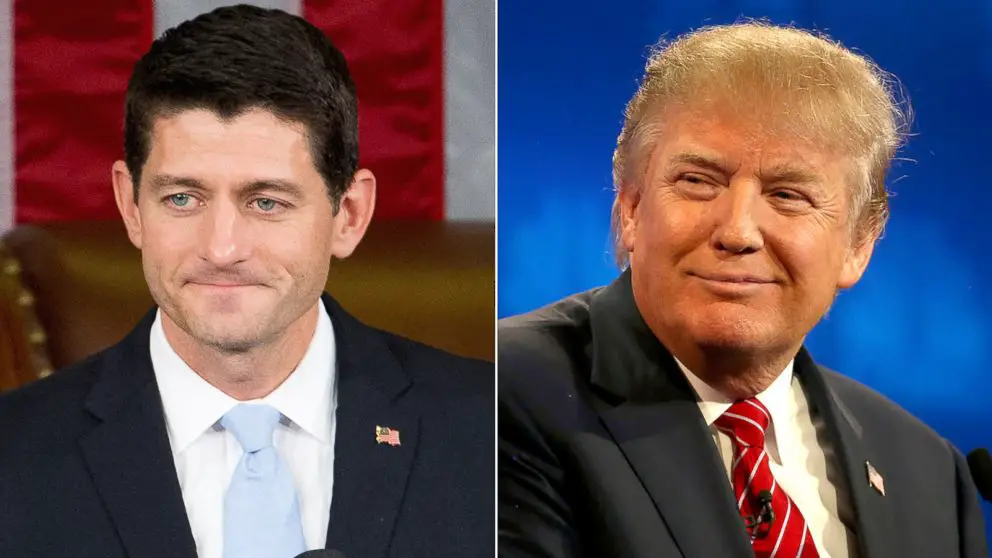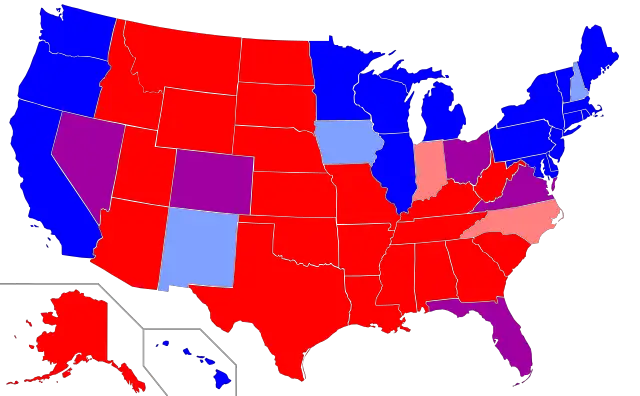Donald Trump’s main argument was that he could appeal to blue collar workers, and any Democrats who are disaffected. The idea was to reach out to Democrats and Independents, and to ignore or argue against core Republican issues, such as free trade. After all, where else could those Republicans go? To Hillary? Not likely.
The problem is that Trump is an improviser, whose ad libs go off-message. Worse, he is thin skinned, so any criticism of him is met with long, drawn-out defenses, which are also off-message. Such as his attacks on the Khan family. Worst of all, he is most interested in Donald Trump, offending many people, such as by complaining about a judge in a purely private, personal lawsuit, which had no place in a political campaign—ie, questioning the integrity of the “Mexican” judge hearing his case.
Trump is having such a hard time in the polls, because he has alienated many in the base of the Republican Party, without gaining as much as he expected in the Democratic faithful. Many Republicans are jumping ship, most recently Colin Powell. Reagan was much more effective at this—speaking to disaffected “Reagan Democrats,” many of whom continued to vote for down-ballot Democrats. In a country which still has a larger Democratic registration and identification, Reagan helped elect GHW Bush, and if it were not for Ross Perot, and an unfortunate economic dip, we might have had Republican presidents ever since—just as we had Democratic presidents from 1933 to 1953.
The country is split in two, not just from neighborhood to neighborhood, but also, state to state. If you look at the political map, Democrats control New England and the west coast. The upper Midwest is also expected to go Democratic, from Minnesota to Pennsylvania (minus Indiana, of course). Meanwhile, Republicans have the Solid South and the vertical middle of the country—from Texas, up to North Dakota.
Assuming that polls are correct, Trump seems to have failed in his attempt to take the “Rustbelt States.”
Donald Trump once looked capable of turning the Rust Belt red.
Now, two weeks before Election Day, his best hope is to turn it a lighter shade of blue. His prospects have dwindled down to just one industrial swing state — Ohio — and even that is no longer the comfortable bet for Trump it appeared to be as recently as a month ago. . .
It’s a sharp rebuke of the belief, long cherished by Trump allies, that the GOP nominee could remake the electoral map with his populist appeals on trade and immigration. . .
While Trump appears to be running well in industrial areas ranging from western and northeastern Pennsylvania to northern Wisconsin, he’s falling short in the populous, affluent suburbs in those states that are vital to GOP chances of winning statewide. (Trump is poised to carry Indiana, a more reliably Republican Rust Belt locale that wasn’t considered competitive this year).
Of course, realignments take time. The “Solid South” took decades to switch from Democratic to Republican. It’s quite possible, especially if our manufacturing segment continues to drag, that the Rust Belt could eventually flip to Republican. But to do this, the party would have to pursue policies that would alienate—and possibly lose—other Republican constituencies.
It’s quite possible that the Republican Party could become what the old Democratic Party was, and vice versa. That is, the Solid South could align with the Rust Belt, forming a populist party, and the former Republican bulwarks—bankers, Wall Street, and big business of New England and the west coast would be the base of the Democratic party. Politics is always in flux.
Even the African-American vote can change. It was solidly for the “Party of Lincoln” for a century, but as Southern Whites became Republicans, Blacks became Democrats. Of course, that could change again. Over the weekend, Saturday Night Live put on a sketch that surprised many, and answered Rodney King’s question, “Can’t we all get along?”
The sketch was called “Black Jeopardy,” with all the accouterments of the “Jeopardy” TV game show.
However, all the categories were African-American topics. The thing that made the sketch outstanding was that, somehow, Tom Hanks, dressed as a “good ol’ boy” Trump supporter, complete with “Make America Great Again” cap, was included. The explanation of why he was there was that he had heard he could win some money—“git’r done!” The expectation was that Hanks would look like a moron, not understanding Black culture, and saying ludicrous things.
However, that didn’t happen. The Trump supporter actually held the same views as the African-American contestants, and by the end, they fully accepted him. There was a final punchline, with the “Final Jeopardy” answer being “Lives That Matter.” Obviously, the White Trump supporter wouldn’t be expected to understand the complete Black Experience. But the rest of the sketch made a connection between the disenfranchised of differing races, which is how coalitions are built.
Trump attempted to reach out to the African-American community, even claiming that he would get 95% of their vote in his re-election. But he offended them, by claiming they “live in hell,” rather than speaking of positives, such as recognizing that the ideals and ethics and dreams of the Black community are very similar to those of Whites. And he could have gone into specifics of a plan to rebuild Black communities, but that would risk alienating many of the white Democrats he wants to draw in.
Building a coalition is a tricky matter. If Trump doesn’t win this time, he’ll be back. That makes many Democrats happy, since it suggests an ongoing Republican civil war. However, the Financial Post says, in effect, “be careful what you wish for.”
Many predict the implosion of the Republican Party, through a civil war that irrevocably splits the party in two, hiving off a populist Trump-like party, akin to Ross Perot’s anti-NAFTA Reform party, in the 1992 election. The Democrats relish this scenario, which let Bill Clinton win the presidency with just 43 per cent of the popular vote. But they shouldn’t. The likely loser in a new three-party system in the U.S. would be the left.
If Donald Trump loses to Hillary Clinton on Nov. 8, he’s unlikely to go away and sulk. Trump now has more than 40 per cent of the electorate behind him, tens of millions of people whose fury at the establishment has been unleashed. . .[Mitt] Romney doubts the Republicans will get those voters back. Trump, who has been attacking Republicans with the same vitriol as he has Democrats, will make sure of it. . .
If the 2020 “populist party” were headed by someone more like Ross Perot—also a firebrand, but without Trump’s character drawbacks—the populist candidate might win. Perot, for example, attracted both blue-collar Democrats and anti-immigration Republicans, and at one point in the 1992 presidential race, actually outpolled both Bill Clinton and George H.W. Bush. This third-party candidate’s popularity was all the more remarkable, because the public was then less cynical about the mainstream parties: Almost 60% of Americans ere satisfied with the way they were governed. Today, less than half as many, 25 per cent, are satisfied, an indication of the appetite for change. . .
If the Republican Party does split into two, it will be in the interests of the two Republican factions to minimize the number of states—and thus, the electoral votes—that the Democrats can win, to deny the Democrats a majority. They could accomplish this by not competing against each other where doing so would ensure a Democratic victory. . .
A Republican implosion is by no means assured. A Reaganesque unifier may well emerge over the next four years, with broad appeal to Republicans of all stripes. Failing that, the three-party system may make its entrance, stage right, to the unexpected dismay of Democrats.

